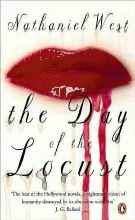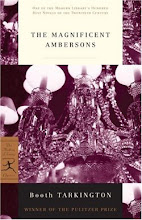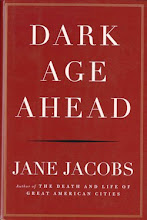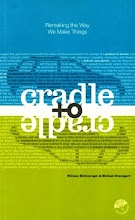
“And I saw when the Lamb opened one of the seals, and I heard, as it were the noise of thunder, one of the four beasts saying, Come and see.
And I saw, and behold a white horse: and he that sat on him had a bow; and a crown was given unto him: and he went forth conquering, and to conquer.
And when he had opened the second seal, I heard the second beast say, Come and see.
And there went out another horse that was red: and power was given to him that sat thereon to take peace from the earth, and that they should kill one another: and there was given unto him a great sword.
And when he had opened the third seal, I heard the third beast say, Come and see. And I beheld, and saw a black horse; and he that sat on him had a pair of scales in his hand.
And I heard a voice in the midst of the four beasts say, A measure of wheat for a penny, and three measures of barley for a penny; and see thou hurt not the oil and the wine.
And when he had opened the fourth seal, I heard the voice of the fourth beast say, Come and see.
And I looked, and behold a pale horse: and his name that sat on him was Death, and Hell followed with him. And power was given unto them over the fourth part of the earth, to kill with sword, and with hunger, and with death, and with the beasts of the earth.”
Revelation chapter 6, verses 1 to 8
What the Future Holds
The following are a few quotes from the prediction of consequences due to climate change.
“As many as 30 per cent of species face an increased risk of vanishing if global temperatures rise 1.6 degrees Celsius above the average in the 1980s and 1990s.”
“Hunger for millions with a sharp fall in crop yields in Africa. It could also rapidly thaw Himalayan glaciers that feed rivers from India to China and bring heat waves for Europe and North America.”
“Global warming could also create tens of millions of climate refugees.”
"According to some estimates, there are already almost as many environmentally displaced people on the planet as traditional refugees,"
"As the impacts of climate change strike home, the numbers are likely to rise considerably, possibly as high as 50 million by 2010.”
“Water shortages that could affect billions of people and a rise in ocean levels that could go on for centuries.”
“Africa will be hardest hit. By 2020, up to 250 million people are likely to be exposed to water shortages.”
“In some countries, food production could fall by half.”
“North America will experience more severe storms with human and economic loss, and cultural and social disruptions. It can expect more hurricanes, floods, droughts, heatwaves and wildfires.”
“Europe will face more heatwaves and drought, with a reduction in crop productivity.”
“Parts of Asia are threatened with widespread flooding and avalanches from melting Himalayan glaciers. Europe also will see its Alpine glaciers disappear.”
“Nearly a third of the world's species of animals and plants will be at risk of extinction by climate change within 50 years.”
“Scientists predict the loss of thousands of species in temperature-sensitive biodiversity hot spots such as the Great Barrier Reef, off the east coast of Australia, if temperatures go on rising.”
“Some species, such as corals, there will no longer be in a climate that is suitable for them to survive. Others, like the North American rock rabbit, the pika, may be unable to reach distant regions that are more suitable.”
“What came out of our exhaust pipes and power stations [from Europe and North America] contributed to the deaths of a million people in Africa, and afflicted 50 million more”
“A Sahara type of climate could be possible in places such as England, while other parts of the world would fare even worse.”
“There was a very serious reduction in sunlight, the amount of sunlight in Israel. In fact, if we compare those very early measurements in the 1950s with the current measurements, there was a staggering 22% drop in the sunlight.”
“The three warmest years on record have all occurred since 1998; 19 of the warmest 20 since 1980.”
We can no longer ignore the destruction of the world as we know it. The information listed above is from over 2,500 scientists representing the world authority on climate change. There was little doubt about the science, which was based on 29,000 sets of data, much of it collected in the past five years. Each day a new stunning revelation about the impact of climate change illustrates the magnitude of the impending apocalypse. Yesterday it was the prediction that the production of maple syrup will cease in the United States within a generation. Maybe we need to see it from a graphic perspective.

“A warmer climate may have significant effect on the forests. Decidous forests will probably move northwards and to higher altitudes, replacing coniferous forests in many areas. Some tree species will probably be replaced altogether, jeopardizing biological diversity several places. (UNEP/GRID-Arendal Maps and Graphics Library)”
 “The figure shows a comparison of current vegetation zones at a hypothetical dry temperate mountain site with simulated vegetation zones under a climate-warming scenario. Mountains cover about 20% of the Earth's continents and serve as an important water source for most major rivers. Paleologic records indicate that climate warming in the past has caused vegetation zones to shift to higher elevations, resulting in the loss of some species and ecosystems. Simulated scenarios for temperate-climate mountain sites suggest that continued warming could have similar consequences. Species and ecosystems with limited climatic ranges could disappear and, in most mountain regions, the extent and volume of glaciers and the extent of permafrost and seasonal snow cover will be reduced. Along with possible changes in precipitation this would affect soil stability and socio-economic activities such as agriculture, tourism, hydropower and logging. Resources for indigenous populations and recreational activities would also be disrupted (UNEP/GRID-Arendal Maps and Graphics Library).”
“The figure shows a comparison of current vegetation zones at a hypothetical dry temperate mountain site with simulated vegetation zones under a climate-warming scenario. Mountains cover about 20% of the Earth's continents and serve as an important water source for most major rivers. Paleologic records indicate that climate warming in the past has caused vegetation zones to shift to higher elevations, resulting in the loss of some species and ecosystems. Simulated scenarios for temperate-climate mountain sites suggest that continued warming could have similar consequences. Species and ecosystems with limited climatic ranges could disappear and, in most mountain regions, the extent and volume of glaciers and the extent of permafrost and seasonal snow cover will be reduced. Along with possible changes in precipitation this would affect soil stability and socio-economic activities such as agriculture, tourism, hydropower and logging. Resources for indigenous populations and recreational activities would also be disrupted (UNEP/GRID-Arendal Maps and Graphics Library).”
“The transmission of many infectious diseases is affected by climatic factors. Infective agents and their vector organisms are sensitive to factors such as temperature, surface water, humidity, wind, soil moisture, and changes in and forest distribution. This applies particularly to vector-borne diseases (VBD) like malaria. It is therefore projected that climate change and altered weather patters would affect the range (both altitude and latitude), intensity, and seasonality of many vector-borne and other infectioius diseases. In general, increased warmth and moisture would enhance transmission of VBDs. However, it should be noted that any such climate-related redistribution of disease may also entail, perhaps in conjunction with other environmental stresses, some localized reductions in rates of infection.”
“In tropical countries, VBDs are a major cause of illness and death. For the major VBDs, estimates of numbers of people at risk and infected, and of VBD sensitivity to climate are shown in the figure. While the potential transmission of many of these diseases increase in response to climate change, the capacity to control the diseases will also change. New or improved vaccination can be expected; some vector species can be constrained by use of pesticides. Nevertheless, there are uncertainties and risks here, too: for example long term pesticide use breeds resistant strains and kills many predators of pests (UNEP/GRID-Arendal Maps and Graphics Library).”
Within a generation we will witness a cataclysm the world has never experienced in billions of years of existence. On a personal level, I cannot conceive that environments I have experienced will possibly no longer exist in my lifetime. Consider my trek to watch the spawning of millions of salmon in the pristine estuaries of Sitka, if fact wild salmon may no longer exist as a food stable in a short period of time. My photos of the glaciers in Glacier National Park will be my only evidence of a million years of existence. Swimming in schools of fish in the Great Barrier Reef could be a distance memory as the sun bleaches the coral into dead white graveyards. The beaches in New Jersey and Florida that I spent so much of my childhood will disappear under the rising sea level as erosion scours the shore. Islands in the Caribbean where I spent so many winters could we swept away. My childhood ski trips to Hunter Mountain in New York and Okemo in Vermont will be a footnote in some historical heritage museum. When will we decide the threat is real and inevitable? What will spur individuals to action?
The emergence of a small sustainable movement is being hijacked by our consumer driven economy. What is most disturbing to me that everyone is wrapping themselves in a “green” cloak to avoid discovery that nothing much has changed. If you want to really understand what “green” means read William McDonough's new book “Cradle to Cradle”, written with his colleague, the German chemist Michael Braungart, which is a manifesto calling for the transformation of human industry through ecologically intelligent design. McDonough indicts the entire conservation movement as “doing bad things less slowly” and challenges industry to radically rethink its approach. The book makes the case that an industrial system that "takes, makes and wastes" can become a creator of goods and services that generate ecological, social and economic value, but we are running out of time.
The “green“ cloak is really a sedative to convince the public that they are contributing to the welfare of the environment when they are not. The issue is arising everywhere, from green products to green communities. We purchase green to feel good that we are making a contribution without impacting our lifestyles. Commercial office space and multifamily residential properties are only now classified as “Class A” investment property if it is “green architecture” which is movement in the right direction, but for some it is a reason to stop examining other detrimental activities they are engaged in. Poor people have little option to be anything but sustainable, with so little resources to participate significantly in the consumer economy. It is the upper and middle class of society that have the ability to accelerate change, but have convinced themselves that recycling the random plastic container or participating in an eco-tourism vacation will save the world when they run businesses that are supporting petro-chemical post industrial economy. Why do they not recognize the contradiction? Doing the right thing is often inconvenient for the privelged.
How many executives, board members, business owners and individuals in positions of responsibility take great pride in having a second home in Costa Rica or some other pristine environment and traveling on safari to see the splendors of nature, while the basis of their wealth is belching out pollutants in some toxic industrial park? How often to you see the executive brimming at the gala handing over a check to their favorite environmental cause while their company hires lawyers to fight some EPA infraction? Privilege demands accountability and social responsibility. Instead privilege allows them to indulge in dragging their children around the world frantically trying to show them the few remaining natural wonders, before they are obliterated by their own apathy and inaction.
As William McDonough describes it “The industrial framework that dominates our lives now is fairly primitive. It is conceived around a one-way manufacturing flow—what is known as a "cradle to grave" lifecycle. This cradle to grave flow relies on brute force (including fossil fuels and large amounts of powerful chemicals). It seeks universal design solutions ("one size fits all"), overwhelming and ignoring natural and cultural diversity. And it produces massive amounts of waste—something that in nature does not even exist.”
He sees the next industrial revolution as transforming the making of things. “This fundamental conceptual shift leads to design strategies that some might find surprising. For example, instead of minimizing the consumption of energy generated from coal, oil, and nuclear plants, why not maximize energy availability using solar and wind sources? Instead of using only natural, biodegradable fibers like cotton for textile production (a pesticide-intensive agricultural process), why not use non-toxic synthetic fibers designed for perpetual recycling into new textile products? Instead of directing intelligence towards regulation compliance and liability reduction, why not design industrial processes and products so safe they do not need regulation, and direct creativity towards maximizing economic, social, and ecological benefits?”
I am pessimistic that we will change our patterns of destructive behavior so that the story will have a happy Hollywood ending. Society has squandered almost a half a century of knowledge and warning about the impending apocalypse. The road map was clear fifty years ago with Lewis Mumford’s “Values for Survival” (1946), Aldo Leopold “Sand County Almanac” (1949), Harrison Brown’s “The Challenge of Man’s Future” (1954) Rachel Carson’s “Silent Spring” (1962), Paul Ehrlich’s “The Population Bomb” (1968), William L Thomas’ “Man's Role in Changing the Face of the Earth” (1971). Appalling it has been 15 years since Al Gore wrote “Earth in the Balance: Ecology and the Human Spirit” (1992) which is the fundamental message of his movie “An Inconvenient Truth” (2006) which is finally moving the public debate. It is my fear that the privileged few which can control the economy have recognized the need to react too late to prevent the destruction of the world we once knew. Our children will inherit the wrath of the four horseman of the apocalypse, living in world where they will become environmental refugees as they watch millions of the world’s population die and conduct war for the precious few natural resources left.
It is only appropriate that on this Easter we reflect on the bible to provide us strength for the future we have created. Behold the “Fifth Horseman” for he is the light of the world.
“Then I saw Heaven opened, and behold, a white horse! He who sat upon it is called Faithful and True, and in righteousness he judges and makes war.
His eyes are like a flame of fire, and on his head are many diadems; and he has a name inscribed which no one knows but himself.
He is clad in a robe dipped in blood, and the name by which he is called is The Word of God. And the armies of heaven, arrayed in fine linen, white and pure, followed him on white horses.
From his mouth issues a sharp sword with which to smite the nations, and he will rule them with a rod of iron; he will tread the wine press of the fury of the wrath of God the Almighty.
On his robe and on his thigh he has a name inscribed, King of kings and Lord of lords.”
Revelation chapter 19, verses 11 to 16












































